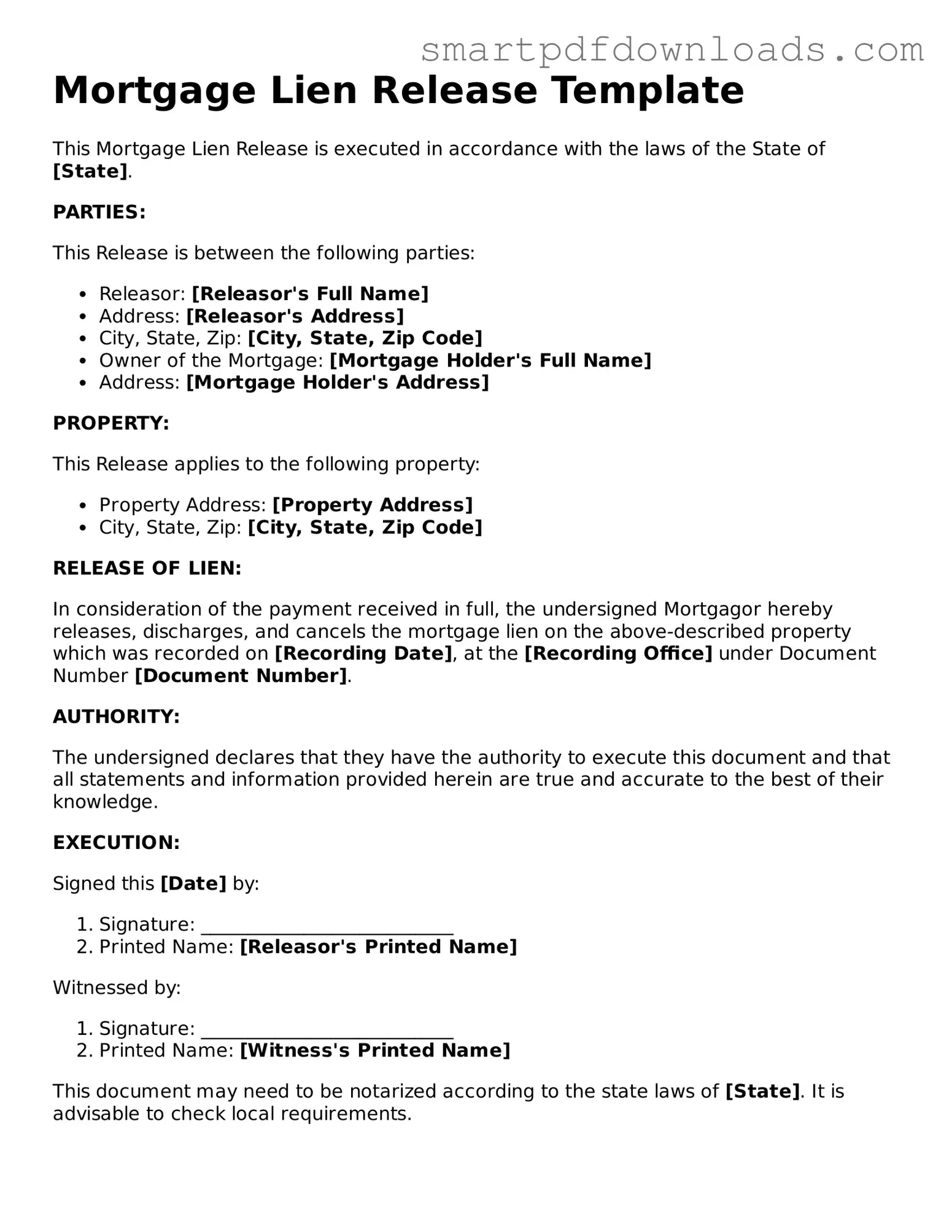Mortgage Lien Release Template
This Mortgage Lien Release is executed in accordance with the laws of the State of [State].
PARTIES:
This Release is between the following parties:
- Releasor: [Releasor's Full Name]
- Address: [Releasor's Address]
- City, State, Zip: [City, State, Zip Code]
- Owner of the Mortgage: [Mortgage Holder's Full Name]
- Address: [Mortgage Holder's Address]
PROPERTY:
This Release applies to the following property:
- Property Address: [Property Address]
- City, State, Zip: [City, State, Zip Code]
RELEASE OF LIEN:
In consideration of the payment received in full, the undersigned Mortgagor hereby releases, discharges, and cancels the mortgage lien on the above-described property which was recorded on [Recording Date], at the [Recording Office] under Document Number [Document Number].
AUTHORITY:
The undersigned declares that they have the authority to execute this document and that all statements and information provided herein are true and accurate to the best of their knowledge.
EXECUTION:
Signed this [Date] by:
- Signature: ___________________________
- Printed Name: [Releasor's Printed Name]
Witnessed by:
- Signature: ___________________________
- Printed Name: [Witness's Printed Name]
This document may need to be notarized according to the state laws of [State]. It is advisable to check local requirements.
